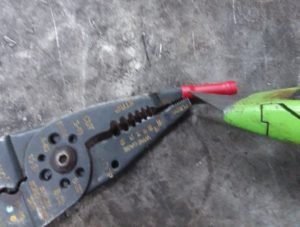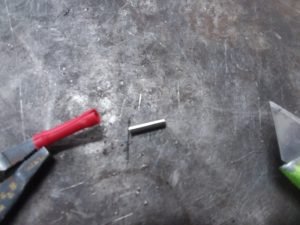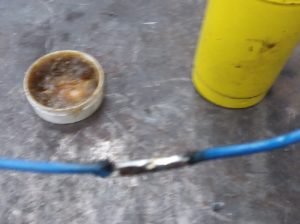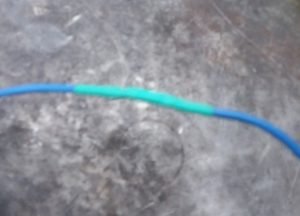I guess crimp connectors are okay for non-critical or temporary electrical connections, but it’s tough to beat a soldered and heat-shrunk connection for reliability and longevity. On anything that could leave me sitting alongside the road, I won’t settle for anything less than a soldered connection. As such, I used to come up with all manner of tortuous ways to hold two ends of copper wire so I could make a soldered butt joint. Rarely did they come out perfect. All too often a sharp piece of tinned wire would stick out threatening to pierce the heat shrink tube I had planned insulate the connection with.
All of that was until one day I was looking at a box of those cheap, hard plastic insulated crimp connectors and I suddenly grew a brain. What if you got rid of the hard plastic jacket and just used the zinc-plated metal core? I tried it once and it worked so well that I have been making butt splices the same way ever since.
Here’s how to do it. Hold on to the plastic jacket with the plier end of your wire tool. Carefully slice at the plastic jacket with a sharp utility knife, remembering to always cut away from yourself and keep your fingers out of the way. I find it usually takes about three firm swipes with a sharp utility knife blade and the metal core pops right out.


Next, strip your wires and twist the ends. Dip the ends of the metal crimp core in soldering flux. Slide a piece of heat shrink tube (or two if you like to double them up as I sometimes do) over the wires and away from the heat of the solder connection you’re about to make. Crimp the core on to the wires as you normally would, fill the joint with solder, and then heat shrink the joint.
That’s all there is to it!


As a side note, I have noticed cheap Copper Clad Aluminum (CCA) wire is a thing now on eBay and Amazon. Stay away from that stuff! It’s absolute garbage for anything automotive or where humidity or moisture might be an issue. Pure copper is a far superior conductor and won’t break down into white dust in a humid environment the way CCA does.
